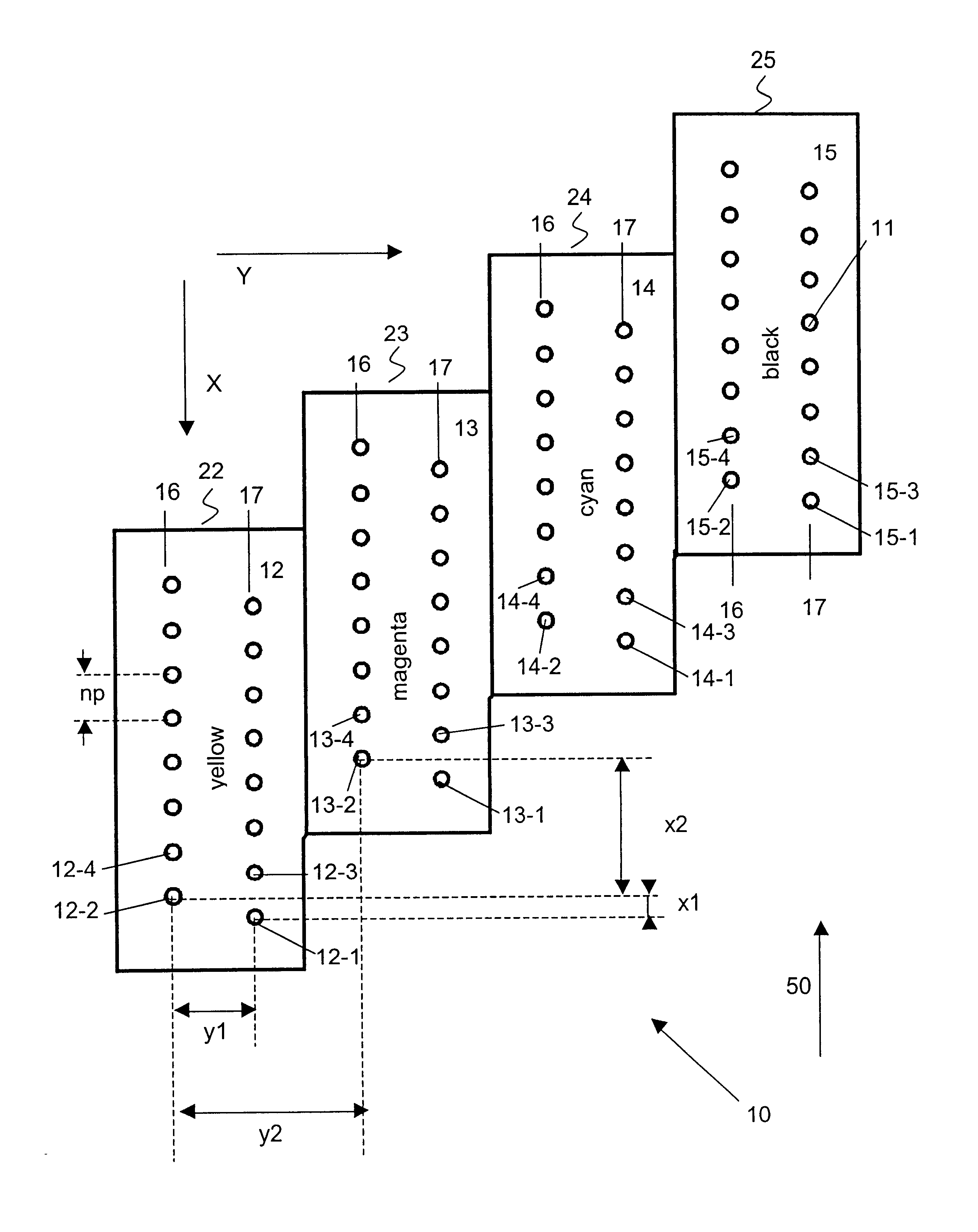Fast mutually interstitial printing
a mutual interstitial printing and fast technology, applied in the direction of matrix printers, visual representation, instruments, etc., can solve the problems of forming artefacts, printing will show defects which can run throughout the printing, and the quality of the drives used is restricted
- Summary
- Abstract
- Description
- Claims
- Application Information
AI Technical Summary
Problems solved by technology
Method used
Image
Examples
Embodiment Construction
The present invention will be described with reference to certain embodiments and drawings but the present invention is not limited thereto but only by the claims. The present invention will be described with reference mainly to ink-jet printing but the present invention is not limited thereto. The term "printing" as used in this invention should be construed broadly. It relates to forming markings whether by ink or other materials or methods onto a printing substrate. Various printing methods which may be used with the present invention are described in the book "Principles of non-impact printing ", J. L. Johnson, Palatino Press, Irvine, 1998, e.g. thermal transfer printing, thermal dye transfer printing, deflected ink jet printing, ion projection printing, field control printing, impulse ink jet printing, drop-on-demand ink jet printing, continuous ink jet printing. Non-contact printing methods are particularly preferred. However, the present invention is not limited thereto. Any ...
PUM
 Login to View More
Login to View More Abstract
Description
Claims
Application Information
 Login to View More
Login to View More - R&D
- Intellectual Property
- Life Sciences
- Materials
- Tech Scout
- Unparalleled Data Quality
- Higher Quality Content
- 60% Fewer Hallucinations
Browse by: Latest US Patents, China's latest patents, Technical Efficacy Thesaurus, Application Domain, Technology Topic, Popular Technical Reports.
© 2025 PatSnap. All rights reserved.Legal|Privacy policy|Modern Slavery Act Transparency Statement|Sitemap|About US| Contact US: help@patsnap.com



